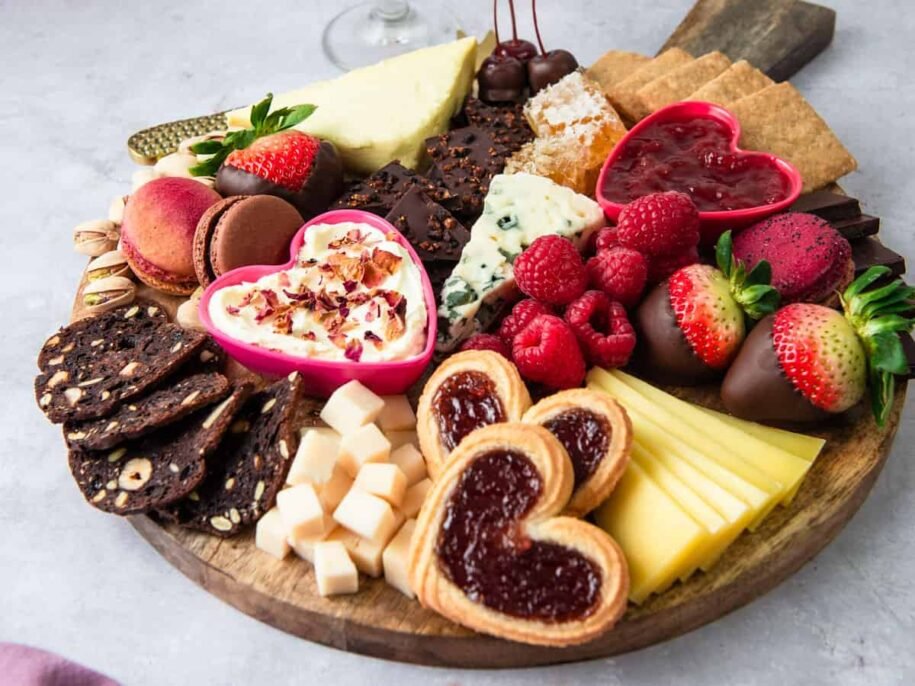When assembling the perfect charcuterie board, selecting the right cheeses is a crucial step. Cheese adds richness, flavor, and variety, creating a balanced experience for your guests. With countless options available, it can be overwhelming to choose the best cheeses to complement your charcuterie spread. To help guide you, here are some essential tips and suggestions for curating the perfect selection of cheeses for your next gathering. For more inspiration on building your charcuterie board, explore this detailed guide here.
1. Understand the Basics: Types of Cheese
When choosing cheeses for your charcuterie board, it’s important to consider different types that offer a variety of textures and flavors. A well-rounded cheese selection should include soft, semi-soft, firm, and blue cheeses to satisfy a wide range of tastes.
Soft Cheeses
Soft cheeses are creamy and spreadable, offering a mild flavor. Examples include:
- Brie: A French cheese with a delicate, buttery flavor and soft rind.
- Camembert: Similar to brie but with a stronger, earthy taste.
Semi-Soft Cheeses
These cheeses are slightly firmer but still have a creamy texture. Some popular options are:
- Gouda: A Dutch cheese with a sweet, nutty flavor.
- Havarti: A Danish cheese known for its mild flavor and smooth texture.
Firm Cheeses
Firm cheeses are denser and often feature more complex flavors. Some well-known firm cheeses are:
- Cheddar: A sharp, tangy cheese that can vary in age and flavor intensity.
- Manchego: A Spanish cheese with a firm texture and nutty, slightly salty taste.
Blue Cheeses
Blue cheeses are distinct for their bold, tangy flavors. Some options include:
- Roquefort: A French blue cheese with a strong, tangy flavor and creamy texture.
- Gorgonzola: An Italian blue cheese with a milder flavor and crumbly texture.
2. Consider the Flavor Profile
When selecting cheeses, consider the flavor profile you want to create. You can mix cheeses with a balance of mild and sharp flavors, or you can create a more adventurous board with intense cheeses like blue cheese and aged cheddar. Aim to select cheeses with contrasting flavors that complement each other rather than overpower one another.
Mild Cheeses
If you want a gentler flavor, include cheeses like brie, mozzarella, and cream cheese. These cheeses pair well with sweet fruits, honey, or jam.
Sharp Cheeses
For guests who enjoy bolder flavors, include cheeses like aged cheddar, asiago, or gorgonzola. These cheeses work well with savory accompaniments like olives, meats, and nuts.
3. Focus on Pairing with Other Charcuterie Elements
Cheese doesn’t stand alone on a charcuterie board—it’s all about pairing it with complementary ingredients. When selecting your cheeses, consider how they will pair with other items on your board, such as meats, crackers, fruits, and nuts.
- Soft cheeses like brie and camembert pair beautifully with sweet fruits like grapes, pears, or figs.
- Aged cheeses like cheddar and manchego are great companions to cured meats like prosciutto or salami.
- Blue cheeses are a perfect match with rich, tangy condiments such as honey or fig jam.
4. Experiment with Regional Selections
Explore cheeses from different regions to add an international flair to your charcuterie board. Regional cheeses can bring unique flavors and textures to your spread. For example, you can incorporate French cheeses like brie and comté, Italian options such as pecorino and gorgonzola, or Spanish cheeses like manchego and tetilla.
Regional varieties also provide an interesting conversation piece for guests, giving them the opportunity to learn about different cheese-making traditions.
5. Don’t Forget Texture and Presentation
The visual appeal of your charcuterie board is just as important as the taste. To ensure an aesthetically pleasing presentation, consider the texture of your cheeses and how they’ll look on the board. Arrange cheeses of different textures in a way that creates balance—soft cheeses like brie should be placed next to firmer cheeses like gouda or cheddar for variety.
In addition, slicing the cheeses into bite-sized pieces or wedges will make them easy for guests to sample. Provide small cheese knives or spreaders for each type of cheese to keep the presentation clean and organized.
Final Thoughts
Choosing the best cheeses for your charcuterie board involves a thoughtful combination of textures, flavors, and pairings. By selecting a variety of cheese types—soft, semi-soft, firm, and blue—you’ll create a diverse and well-rounded board that will satisfy a wide range of tastes. Remember to complement your cheeses with fruits, meats, and condiments, and present everything in an appealing way to make your board a feast for the eyes as well as the palate. With these tips, you’ll be able to create a cheese selection that elevates your charcuterie experience to new heights.







